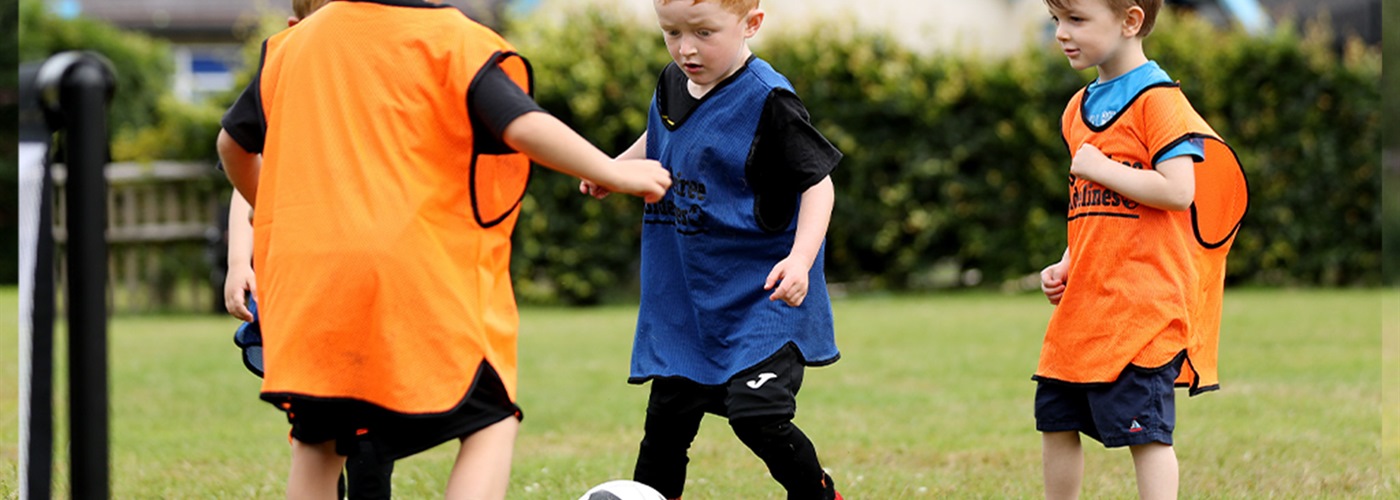Clare Daniels, senior national development manager of solutions and innovations for the FA, explains why smaller game formats are being introduced through the play phase and how to deliver them as captains of play.
Children who attend play phase sessions will come with a wide-ranging understanding of how to take part in matches. Some will have played with their family and friends or seen matches on television. However, for many, this will not be the case.
When it comes to game time, we place children into 5 v 5’s in preparation for U7’s matches. The children deemed to be stronger are placed on one pitch, the others on another. What follows is chaos. One or two children dominate the game, dribbling the length of the pitch with an entourage chasing after them. Some children when they get the ball, either kick it away without thought or dribble it endlessly, not stopping even when they have crossed the pitch lines. You may see multiple goalkeepers in the same goal whilst other children just completely disengage, sit down, make up a different game or return to their parents.
As we witness this spectacle unfold, we direct, instruct, and organise to no avail. So, how can the best part of football turn into this? Simply put, the format for the age and stage of these children is too much! Play phase has been designed with the needs of our youngest children, those aged four to six at its heart. This includes how we can support their development and understanding of how to play matches.
It begins by stripping back match play into smaller game formats, i.e., 2 v 2’s and defining the core stages that precede this format of the game: direction, scoring goals and learning to play against an opponent. The next challenge is finding a way to deliver this content to your group of children. This becomes challenging when some must work through all these stages and others won’t.
So how do you do it?
Set up lots of small pitches that are all different sizes. You don’t need to worry about pitch lines – just let the children play. Captains of play can be utilised to help recycle the balls and keep the games flowing. Each pitch should have a different type of game and focus. For example, one focuses on learning direction, another on scoring goals, and one on how to play against an opponent.
For those children who have mastered all the stages, let them play 2v2 on another pitch. It will take time for all children to learn how to play this smaller format of the game. So, don’t rush them through the stages as it’s an important foundation in their development as a player.
Undertaking the play phase training will provide you with access to specific sessions that will support all children learning to play 2v2.
Our youngest children will come to football with a wide variety of experiences. To help as many children fall in love and learn to play the game, set up several pitches that vary in task and size to cater for the wide difference that will be in your group.
Ensure each child is given the opportunity to learn how to play in a game. Be patient and move the children through the different game stages until they are happy and able to play in a 2 v 2.
What is your biggest challenge when introducing our youngest children to matches?
How do you currently help children who stand still, sit down or return to their parents when it's time to play a match?
Comment below.
For more info, check out these resources.
Also, keep an eye out for more play phase blogs on this page.
We will also be running live events where you can ask experts written questions on the forum. These are taking place on:
5th December 6-7pm
19th February 6-7pm
4th June 6-7pm


